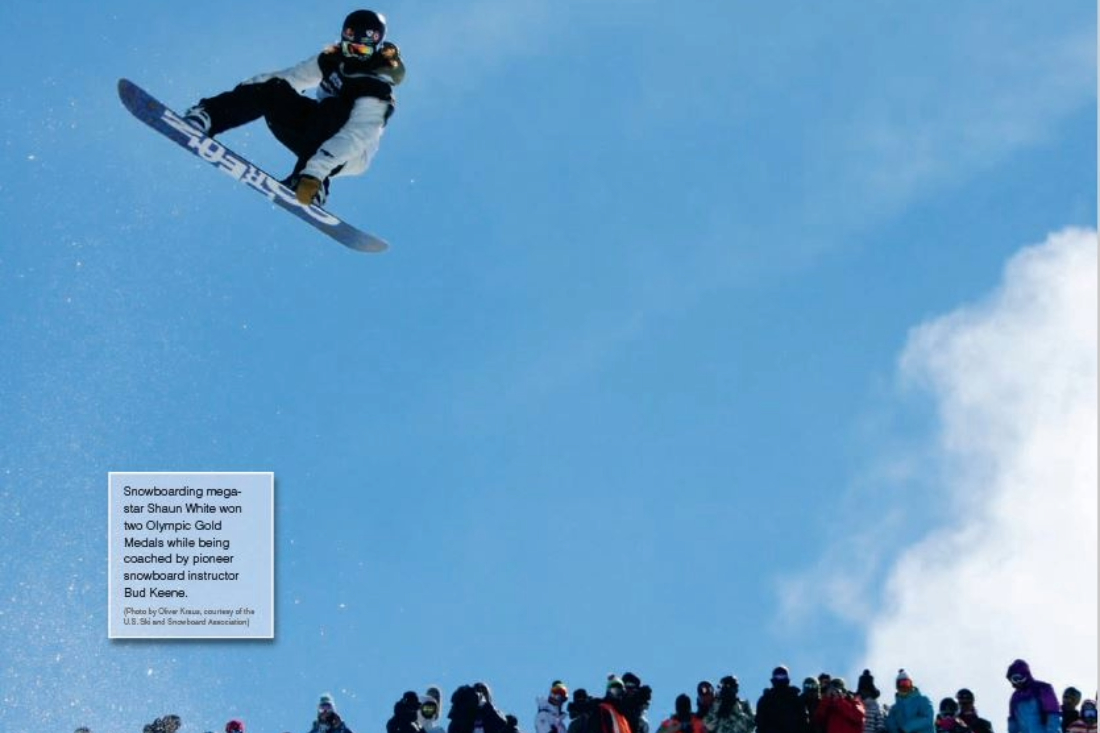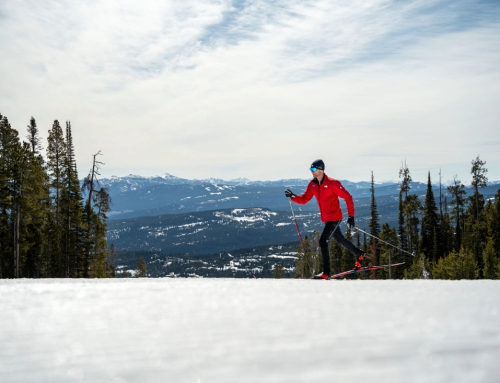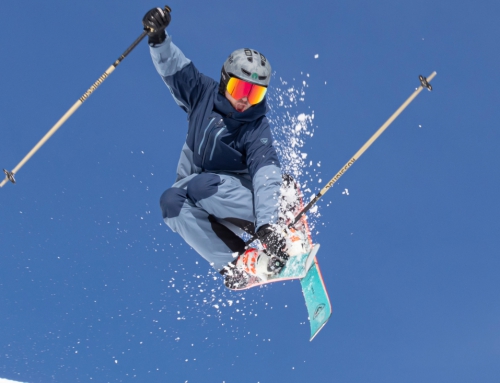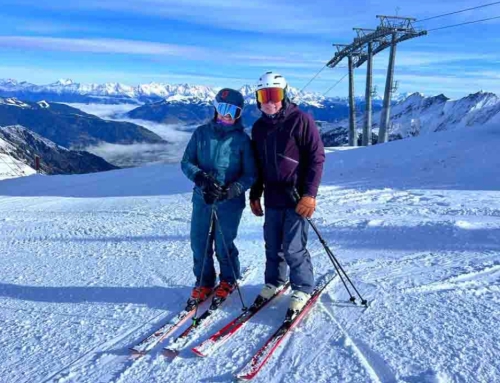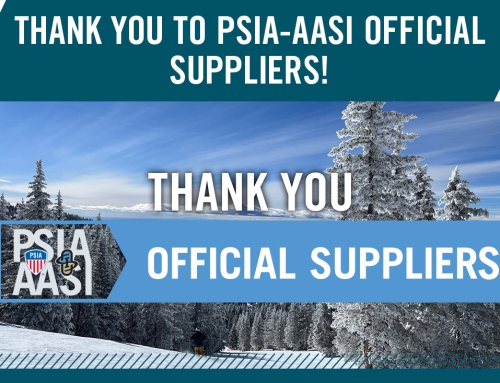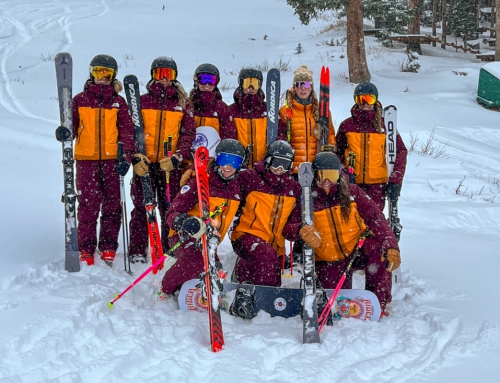American Snow: The One-Board Revolution
American Snow is the essential history of PSIA-AASI; the association’s many teaching breakthroughs; and all the stoke, learning, and instructional insight U.S. snowsports instructors have brought – and continue to bring – to the slopes.
With AASI Rider Rally preparing to celebrate its 25th anniversary, here are some of the highlights from American Snow of the birth of snowboarding and how AASI continues to play a crucial role in growing this wonderful sport.
***
Snowboarding hit skiing like a runaway train, speeding the entire sport onto a faster track. American born, built on skate culture and surf style, it pulsed with the exuberance of youth and freedom – two of the country’s most consistent exports – and fat skis, halfpipes, and shaggy-haired Olympic gold medal shredders sprang up in its wake.
It began with a simple question – “Why not one board instead of two?” – that spread like wildfire across U.S. ski resorts, creating a blaze of excitement and conflict and launching a new era in activities from slope preparation to the design of equipment. One joke among snowboarders goes, “Hey skiers, you never thanked us for saving your sport,” because it arrived at the exact moment when many skiers were beginning to bristle against skiing’s increasing sameness and lack of access – its focus on perfect turns, stretch pants, and real estate and the sense that the mountains were being run by risk managers doing all they could to prohibit fun on the slopes.
. . . “It certainly had a bit of the outlaw image at the start, coming as it did from skate and surf culture. But the intolerance in the beginning just helped push that through the roof,” said PSIA-AASI member Bud Keene, who was one of the country’s first snowboard instructors and who later coached the two-time Olympic gold medal performances of U.S. superstar Shaun White. “That ready-made conflict gave the sport a kind of romanticism that just pushed the needle up a lot.”
Because of their sideways riding stance, the lack of steel edges, and surfboard-style rudders and skegs still attached to the tails – both first-generation design elements that were quickly made obsolete – the earliest snowboarders lacked the control of skiers and often dropped a hand into the snow like an oar to make a turn, which led to them being labeled as “knuckle draggers” by skiing’s purists.
That perceived lack of control was another reason insurance companies would not underwrite snowboards as “directional devices” and why resorts were able to bar snowboarders from that one aspect of on-mountain infrastructure that they most wanted to access – the chairlifts.
But being locked out of the playground only strengthened the resolve of the rapidly growing group of converts who were inspired by the simple grace of snowboarding and who helped build the sport. Said Keene, “As soon as you saw someone else with a snowboard you had something to talk about. You immediately had something unique in common, and there was a bond that came from that.”
THE EARLY YEARS
Keene, who was first introduced to snowboarding in Stowe, Vermont, by another pioneer of snowboard instruction, the tall, blonde, perpetually inspired Lowell Hart, said the perception that snowboarders lacked technique only made him want to perform even better. His naturally competitive persona made him want to beat the skiers at their own game. It was Hart, he said, who saw that working within the existing structure of skiing would be the fastest way to open the doors for the widespread acceptance of the sport.
“Lowell understood from the beginning that if we wanted snowboarding to succeed, we needed to go to the resorts with an instruction plan, and an equipment plan, and most importantly, a way to make it profitable,” Keene said.
“Ski areas had a huge concern about liability,” added Hart. “But in those early years the people who were snowboarding had a very high inner level of motivation, so we would keep doing things like hiking up under the chairs on powder days, sometimes having confrontations with the ski patrol, and then going into the management offices all covered in snow to ask if we could ride the lifts.”
In the evenings, they went in search of instructional insight. Borrowing as much as they could from PSIA and other existing sports programs – “Even diving,” Hart said, echoing Juris Vagner’s 1970s-era biomechanical research – they were trying to create an instructional progression for the sport’s ever-expanding groundswell of surf-snow acolytes. Both Burton and Sims Snowboards, two of the sport’s original brands, were early supporters of instruction, providing snowboards; stoke; and, most importantly, connections to like-minded riders around the country, all just as passionate about proving to those old-school resort managers that snowboarding belonged on the slopes.
“We kept finding these little pockets of forward-looking people who were all out there developing the equipment, and the technique,” Keene said. “And they all wanted to share how great snowboarding felt.”
Riders such as Ray Sforzo, David Alden, Jeff Grell, Randy Price, Kerri Hannon, and Jane Mauser – the “Johnny Appleseeds,” as Keene calls them – were all working on getting snowboarding accepted at their home resorts.
THE ONLY SNOWBOARDER IN THE WORLD
“In 1981 I was working as a kind of ambassador at Berthoud Pass just to talk to the people who were starting to show up with snowboards,” said David Alden, a tall redhead from Colorado who at the time may have been the only official snowboard ambassador on earth. “Ike Garst, who owned Berthoud with his wife, Lucy, came from a farming family in Iowa and was very much a pragmatist. I don’t think it ever occurred to him that one way of sliding on the snow might be better than another. He just saw people who wanted to ride the lift.”
Berthoud was ground zero for the snowboard scene in Colorado in the 1980s. Anyone who wanted to ride would eventually end up there, dropping into the trees and hitchhiking back up the highway with carloads of skiers on their way to Winter Park, or riding the T-bar or chair where Alden worked. Everyone was making it up as they went along, he said, as “People showed up on Burton ‘Woodys’ or Sims or Wintersticks – or even boards they made on their own – and my job was just to make sure their gear was set up right and find out if they even knew the difference between riding regular or goofy foot. Then I might give them a couple pointers after that.” . . .
THE THINK TANK
When Colorado’s Breckenridge Ski Area opened the lifts to snowboarders in the spring of 1985, Alden was hired as the first instructor. As other areas followed suit, he began to hold informal clinics with the other new snowboard instructors. In the summer of 1986, he wrote an instruction manual for snowboarding in a first attempt “to create a really definable process by which it could be taught.”
. . . He typed up his manual on an old typewriter, “published” it in three-ring binders, and presented it to the PSIA Board of Directors in Lakewood, Colorado, that fall, along with another snowboarder named Marvin Christianson, who had already made a presentation on snowboarding to ski instructors in the Pacific Northwest.
. . . But PSIA had already been doing plenty of its own research and by the next fall the association was ready to act. Alden, Price, Hart, and several of Keene’s other Johnny Appleseeds were invited to Copper Mountain, Colorado, for a snowboard think tank. Their task was to take all the insights they had gleaned from their time on the cutting edge of the sport, combine it with PSIA’s collected breakthroughs in teaching, and in one week set the template for snowboarding’s own instructional Renaissance.
The fact they actually did so is a tribute to the snowboarders who were on the hill, and to PSIA itself. From the slopes to their condos and back each day, those riders embarked on a massive idea dump and shred fest, unleashing years of pent-up insights into how they were growing snowboarding at their home mountains. Brainstorming and bonding from the lifts to the bars, they kept the conversation going as long as they had strength, often falling asleep right where they sat as they hammered out a live action storyline for their sport.
. . . Together, they created the material that would form the basis for the official Snowboard Ski Instruction Manual, which PSIA published in 1989. By matching the movements of snowboarding with the success of the American Teaching System, it was a template for snowboard instruction that could be applied across the country, and it was a foundation for the sport’s next wave of growth.
PC: Photo by Oliver Kraus, courtesy of the U.S. Ski and Snowboard Association

